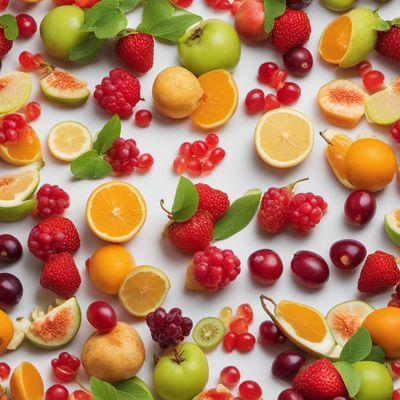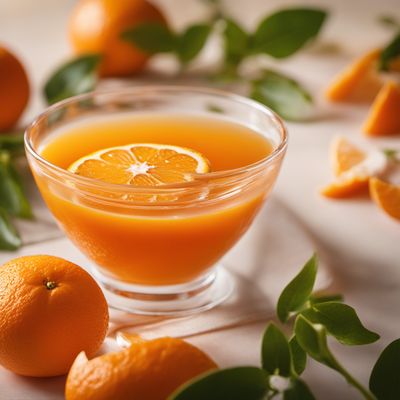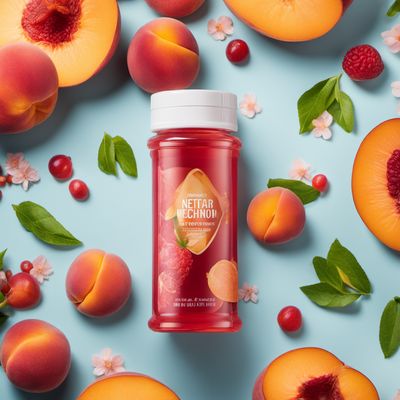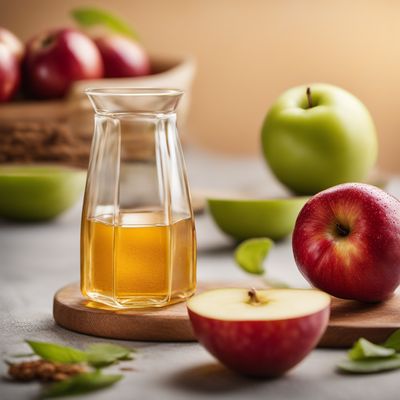
Ingredient
Nectar, pear
The Sweet Symphony of Pear Nectar
Pear nectar is a smooth and velvety liquid made from ripe pears. It has a luscious texture and a vibrant golden color. The taste of pear nectar is sweet and juicy, with subtle floral undertones. Its refreshing nature makes it a versatile ingredient in both sweet and savory dishes. Whether used as a base for cocktails, a glaze for meats, or a flavor enhancer in desserts, pear nectar adds a delightful touch to any recipe.
Origins and history
Pears have been cultivated for thousands of years and are believed to have originated in Asia. They were highly valued by ancient civilizations such as the Greeks and Romans, who considered them a symbol of immortality and fertility. Pear nectar, derived from the juice of ripe pears, has been enjoyed for centuries as a refreshing beverage and a culinary ingredient.
Nutritional information
Pear nectar is a good source of vitamin C and dietary fiber. It is low in calories, with approximately 60 calories per 8-ounce serving.
Allergens
Pear nectar does not typically contain allergens, but individuals with pollen allergies may experience cross-reactivity.
How to select
When selecting pear nectar, look for brands that use 100% pure pear juice without any added sugars or artificial flavors. Check the ingredient list to ensure it does not contain any additives or preservatives. Opt for bottles that are well-sealed and have a fresh, fruity aroma.
Storage recommendations
To maintain the freshness of pear nectar, store it in a cool, dark place away from direct sunlight. Once opened, refrigerate the bottle and consume within a week.
How to produce
While producing pear nectar at home may require specialized equipment, amateur enthusiasts can make a simple version by blending ripe pears with a little water and straining the mixture to remove any solids.
Preparation tips
Pear nectar can be enjoyed as a refreshing beverage on its own or used as a base for cocktails, smoothies, or mocktails. It can also be used as a glaze for roasted meats, a sweetener in sauces, or a flavor enhancer in baked goods. When using pear nectar in recipes, adjust the sweetness accordingly and consider its liquid content to maintain the desired consistency.
Substitutions
If pear nectar is not available, apple juice or white grape juice can be used as suitable substitutes due to their similar sweetness and flavor profiles.
Culinary uses
Pear nectar is commonly used in cocktails, such as the classic Bellini or as a base for fruity mocktails. It can also be used to poach fruits, create fruit-based sauces, or add a touch of sweetness to marinades for meats. In desserts, pear nectar can be used to flavor sorbets, ice creams, or custards.
Availability
Pear nectar is commonly available in most grocery stores and supermarkets, especially during the fall and winter seasons when pears are in abundance.
More ingredients from this category

Nectar, pineapple
"Tropical Delight: Exploring the Vibrant World of Pineapple Nectar"

Nectar, mango
The Golden Elixir of Mango Nectar

Mixed fruit nectars
A Symphony of Fruity Delights: Exploring Mixed Fruit Nectars

Nectar, orange
"The Citrus Elixir: Exploring the Vibrant World of Orange Nectar"

Nectar, peach
The Golden Elixir: Exploring the Sweetness of Peach Nectar

Nectar, apple
The Sweet Essence of Apple Nectar

Nectar, apricot
The Golden Elixir: Unveiling the Delights of Apricot Nectar

Nectar, banana
The Golden Elixir of Bananas